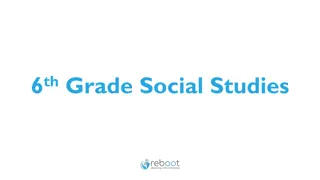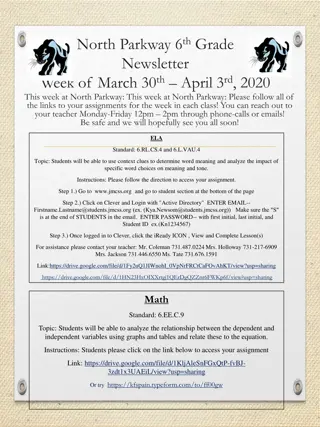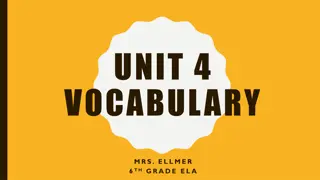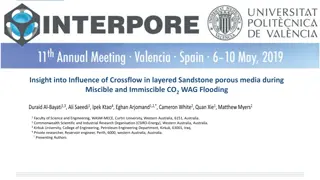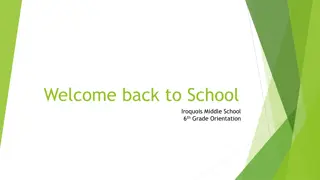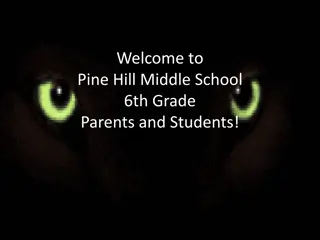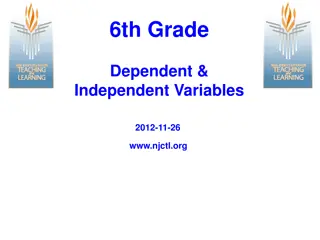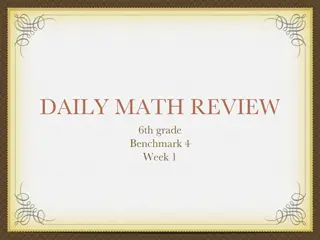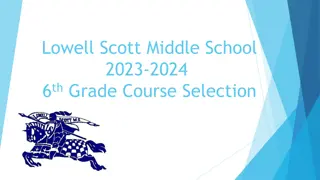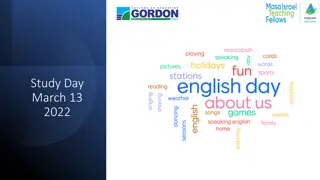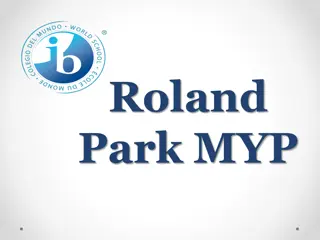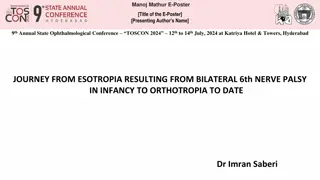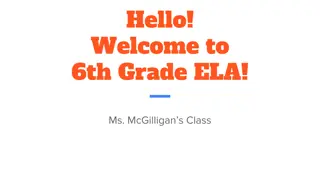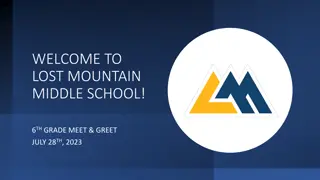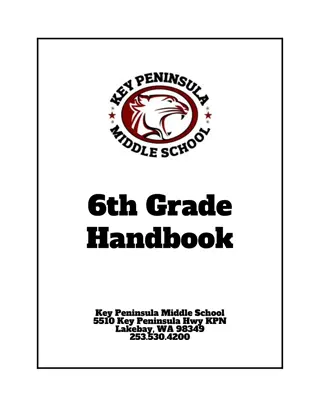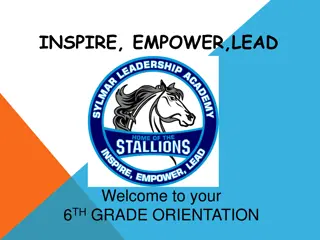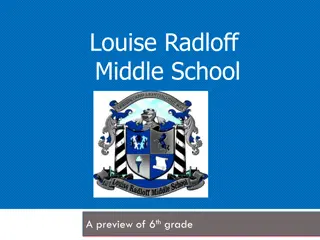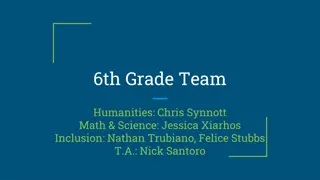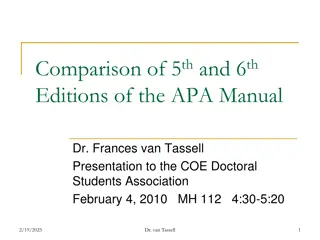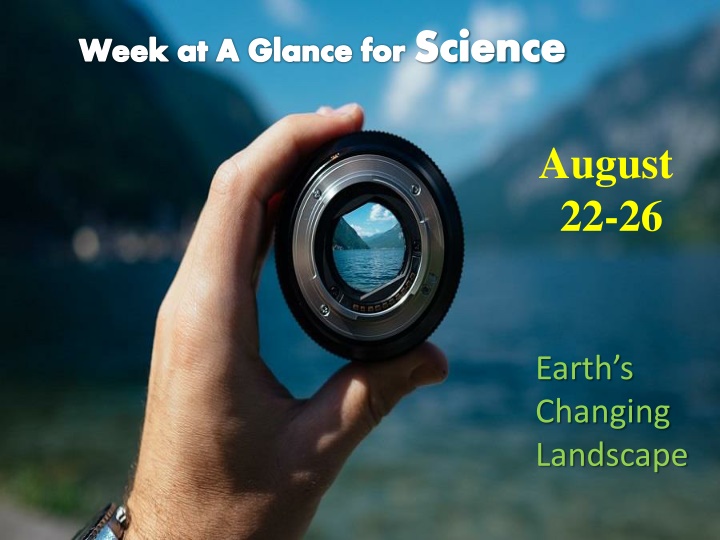
Science Week at a Glance: Earth's Changing Landscape Exploration
Delve into Earth's dynamic surface formation through a week-long exploration focusing on the crust, mantle, core, rocks, plate tectonics, minerals, and fossils. Engage in hands-on activities, discussions, and assessments to deepen understanding of geological processes and Earth's composition. Get ready to ask questions, compare layers, and investigate the evidence of Earth's changing surface and climate.
Download Presentation

Please find below an Image/Link to download the presentation.
The content on the website is provided AS IS for your information and personal use only. It may not be sold, licensed, or shared on other websites without obtaining consent from the author. If you encounter any issues during the download, it is possible that the publisher has removed the file from their server.
You are allowed to download the files provided on this website for personal or commercial use, subject to the condition that they are used lawfully. All files are the property of their respective owners.
The content on the website is provided AS IS for your information and personal use only. It may not be sold, licensed, or shared on other websites without obtaining consent from the author.
E N D
Presentation Transcript
Week at A Glance for Science August 22-26 Earth s Changing Landscape
S6E5. Obtain, evaluate, and communicate information to show how Earths surface is formed. a. Ask questions to compare and contrast the Earth s crust, mantle, inner and outer core, including temperature, density, thickness, and composition. c. Construct an explanation of how to classify rocks by their formation and how rocks change through geologic processes in the rock cycle. f. Construct an explanation of how the movement of lithospheric plates, called plate tectonics, can cause major geologic events such as earthquakes and volcanic eruptions. (Clarification statement: Include convergent, divergent, and transform boundaries.) Supporting Standards b. Plan and carry out an investigation of the characteristics of minerals and how minerals contribute to rock composition. g. Construct an argument using maps and data collected to support a claim of how fossils show evidence of the changing surface and climate of the Earth.
Monday, August 22 Standard: S6E5. a) Ask questions to compare and contrast the Earth s crust, mantle, inner and outer core, including temperature, density, thickness, and composition. Learning Target: I can describe Earth s layers and composition. Warm-up: Silent Reading (Scholastic Magazine). Work Session: Direct Instruction; students will take notes and generate questions that lead to compare & contrast of Earth s layers. Lab Activity: Convert measurements to smallest units that students can then create models or drawings. Closing: Think-pair- Share Reminders: Quiz on Friday
Tuesday, August 23 Standard: S6E5. a) Ask questions to compare and contrast the Earth s crust, mantle, inner and outer core, including temperature, density, thickness, and composition. Learning Target: I can describe Earth s layers and composition. Warm-up: Silent Reading (Scholastic Magazine) Work Session: Guided Instruction; students will research using computers; students will work on model. Lab Activity: Convert measurements to smallest units that students can create models or drawings. Closing: Ticket Out The Door Reminders: Quiz 8/26
Wednesday, August 24 Standard: S6E5. a) Ask questions to compare and contrast the Earth s crust, mantle, inner and outer core, including temperature, density, thickness, and composition. Learning Target: I can describe Earth s layers and composition. Warm-up: The Rock Cycle Work Session: Small group investigations; Board Game; Video Lab Activity: Explore seismic waves by listening to sounds from different items at home/school (watermelon, tree, etc) Closing: Class KWL chart Reminders: Quiz 8/26
Thursday, August 25 Standard: S6E5. a) Ask questions to compare and contrast the Earth s crust, mantle, inner and outer core, including temperature, density, thickness, and composition. Learning Target: I can describe Earth s layers and composition. Warm-up: Silent Reading (Library Book) Work Session: Student Present their findings though observations, research, and analysis of instructional activities. Lab Activity: Focus on temperature and density using scientific tools (triple beam scale, graduated cylinder) Closing: Class KWL chart Reminders:
Friday, August 26 Standard: S6E5. a) Ask questions to compare and contrast the Earth s crust, mantle, inner and outer core, including temperature, density, thickness, and composition. Learning Target: I can describe Earth s layers and composition. Warm-up: Family Feud Earth s Layers edition. Work Session: Family Feud Earth s Layers edition; Board game, Quiz (Earth s Layers) Lab Activity: egg float or paper type, flaps, or design Closing: Journal Writing and Questions I still have Reminders: Quiz 8/26
Resources for Unit 1 A What are the Layers of Earth? Layers of the Earth Layers of the Earth Geology The Good and the Beautiful Home school Science 8:47 7 Ways We Know What s Inside the Earth - SciShow 12:08 An Overview of Earth s Layers - 10:07
S6E5. Obtain, evaluate, and communicate information to show how Earths surface is formed. a. Ask questions to compare and contrast the Earth s crust, mantle, inner and outer core, including temperature, density, thickness, and composition. b. Plan and carry out an investigation of the characteristics of minerals and how minerals contribute to rock composition. c. Construct an explanation of how to classify rocks by their formation and how rocks change through geologic processes in the rock cycle. d. Ask questions to identify types of weathering, agents of erosion and transportation, and environments of deposition. (Clarification statement: Environments of deposition include deltas, barrier islands, beaches, marshes, and rivers.) e. Develop a model to demonstrate how natural processes (weathering, erosion, and deposition) and human activity change rocks and the surface of the Earth. f. Construct an explanation of how the movement of lithospheric plates, called plate tectonics, can cause major geologic events such as earthquakes and volcanic eruptions. (Clarification statement: Include convergent, divergent, and transform boundaries.) g. Construct an argument using maps and data collected to support a claim of how fossils show evidence of the changing surface and climate of the Earth. h. Plan and carry out an investigation to provide evidence that soil is composed of layers of weathered rocks and decomposed organic material.


